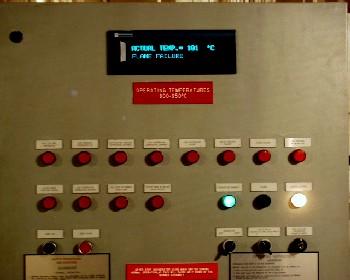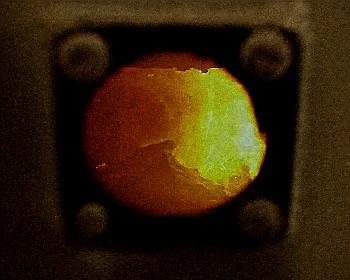
|
|
14 June, 2000
The United States Coast Guard: Stewards for the Environment
With a Coast Guard crew of 75 and a population of scientists that puts
the total population of the USCGC Healy over 100, there is a need for waste
management. Solid waste is produced here, as it is anywhere else. From the
food scraps in the mess hall, to paper towels, aluminum cans, and batteries;
there needs to be a system for separating, recycling, and disposing of the
trash produced on board. Today, Jay and I were given an orientation /
training session by Ensign Plylar.
The trash that is collected on the Healy has been disposed of in clear
plastic bags, so that items that are not supposed to go in the incinerator
can be identified without having to dig through the trash. As with many
communities around United States, the USCGC Healy recycles what waste it
can. The trash is divided up into categories: aluminum, paper products,
batteries, etc. Aluminum cans are saved for recycling, combustibles are
incinerated and non-combustibles are set aside for disposal at ports of
call.
The focus of today's training was the incineration system. This system
can be used to burn paper products, oily rags, and plastic. Metals such as
tin cans and foil, glass, food products, aerosol cans, batteries, etc.
cannot be placed in the incinerator. The incinerator can burn solid waste
products at a rate of 100 pounds per hour and liquid waste products at 20
gallons per hour. The incinerator burns diesel oil and/or sludge in the
combustion section at 950 degrees Celsius / 1,742 degrees Fahrenheit.
The basic components of the incinerator include a feed door, an access
door, a sludge tank, a mixing tank, pumps and burners. The feed door is
used to load the solid waste safely while he incinerator is in operation.
The access door is closed by an air lock (To prevent the door from opening
while the ship is rolling.) while the waste is being loaded. After securing
the feed door, a button is pressed to open the access door, which then
allows the waste to fall into the combustion chamber. The sludge tank,
which contains black water and waste oil, store these wastes before
incineration. The pumps supply the incinerator with appropriate amounts of
diesel fuel and sludge for incineration. The burners are made up of
igniters, which spark the fire, and atomizers, which spray a mist of sludge
and/or diesel oil, needed for continued combustion.
Of course with anything involving fire on board a ship, there are many
safety precautions in place when working with the incinerator. Several
fixed and portable fire fighting systems are nearby, inside and outside the
Incinerator Room. There is also many emergency shut off features on the
incinerator itself. One other safety feature is the carbon monoxide
detection alarm system.
The United States Coast Guard recognizes its roll in being a good steward
for the environment. Admiral James M. Loy, United States Coast Guard
Commandant wrote in his Commandants Environmental Stewardship Challenge, "
As an operator of a wide variety of vessels, aircraft, and support
facilities, the Coast Guard also has a special duty to ensure that we use
our limited resources wisely and minimize the environmental impact of our
operations." This is being carried out on board the USCGC Healy while
providing a platform for scientist to study and better understand our
environment.

A flame failure causes the incinerator to automatically and safely shut down.

A peek inside the combustion chamber, as it incinerates solid waste at temperatures above 840 degrees Celsius / 1544 degrees Fahrenheit.

Ensign Plylar, the teacher's teacher.
Contact the TEA in the field at
.
If you cannot connect through your browser, copy the
TEA's e-mail address in the "To:" line of
your favorite e-mail package.
|
